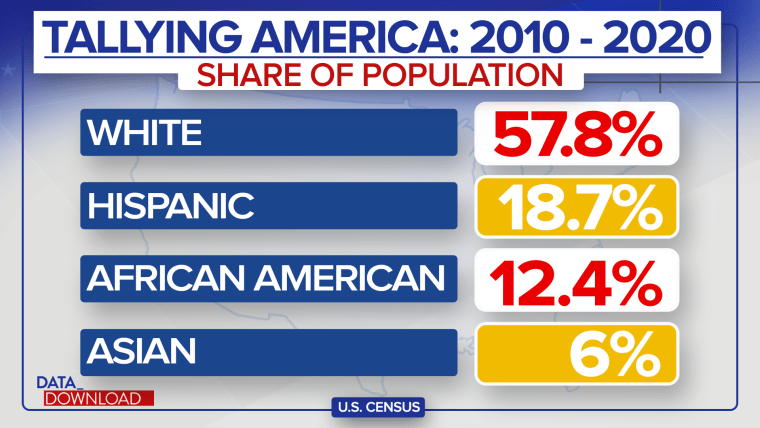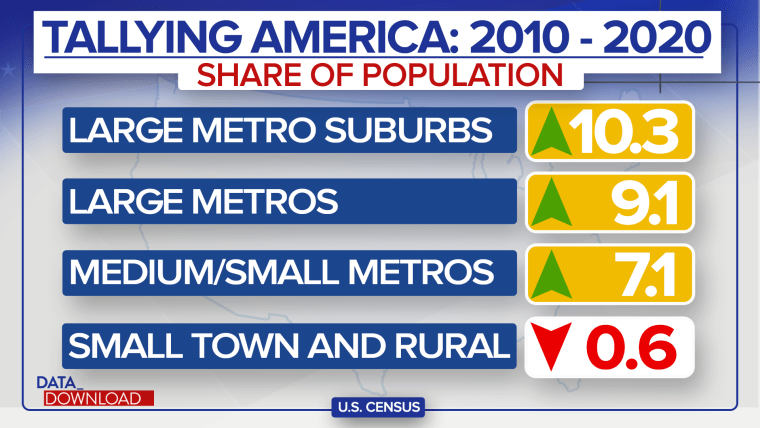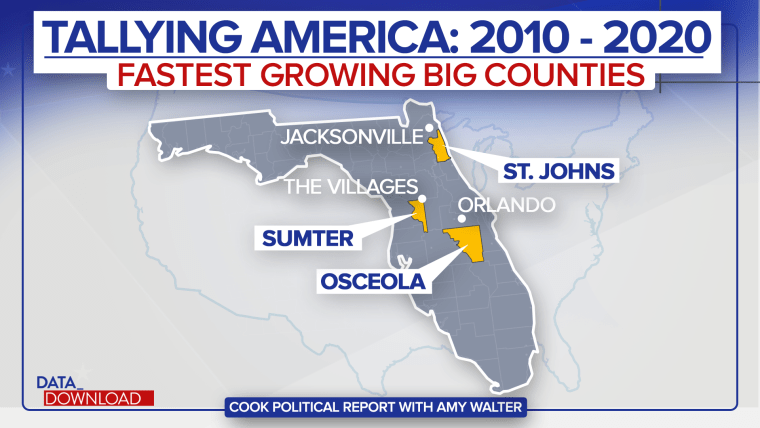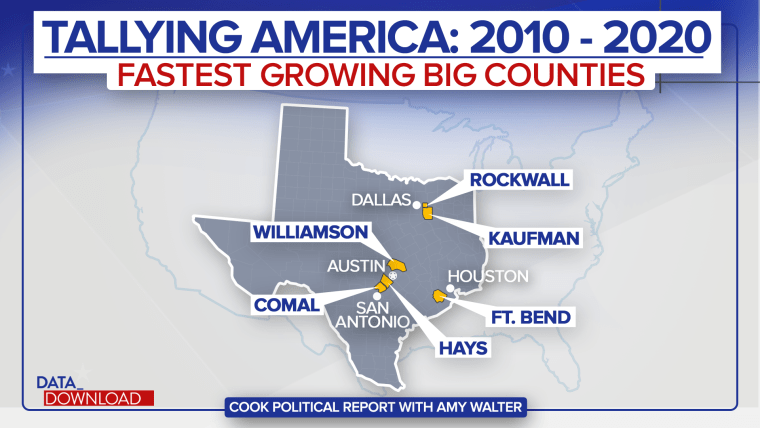WASHINGTON — Last week was nerd Christmas for political data devotees. The Census Bureau released the latest batch of redistricting data from its 2020 head count, including important measures on race, ethnicity and geography.
And two key elements emerged out of the data drop: The country is growing more urban and more racially and ethnically diverse.
The numbers are just a step in a very long and, in some cases, complicated road to new congressional districts. Partisan concerns and goals will play major factors. But in many ways, these data represent the raw materials with which congressional mapmakers will be working, and there may be an inherent partisan tilt to the numbers.
The datapoint that got the most attention showed that for the first time in census history, the white, non-Hispanic share of the population fell below 60 percent.

The drop was driven by two factors. First, other racial and ethnic groups are growing, adding more population. But second, the number of people who describe themselves as white and non-Hispanic also declined, by about 5 million compared to 2010.
The net impact is that Hispanics have grown as a percentage of the population by more than 2 points. The Asian population has grown by a little more than 1 point as a share of the whole. African Americans declined slightly in their share of the population, but that was because other ethnic and racial groups grew so much. In real numbers, more Black people live in the U.S. today than in 2010.
The numbers would seem to favor Democrats, who generally do better among minority voters.
And as the population grows less white, it is increasingly filling the areas around urban centers. On the whole, the population grew by about 7 percent in the last decade, but basically all of that growth happened in cities and suburbs.

The population in the big core urban counties grew by more than 9 percent. The big suburbs, mostly around those places, grew even faster, by more than 10 percent. The medium and small metropolitan counties grew a little more slowly, at just over 7 percent. And the most rural places actually contracted a bit, by a little more than half a percent.
What does that mean in the broader sense? There are a lot of small rural counties in the U.S. Even with the country's overall growth, more than half of all the counties, 52 percent, lost population. Most were small rural places.
The impact of the 10-plus-point bump in the big suburbs really becomes clear when you look at the biggest gainers in population among counties with more than 100,000 people.

The top 10 counties in that group are all in the suburbs of major Southern metro areas, including Austin, Dallas and Houston in Texas; Atlanta; and Jacksonville, Florida. Central Florida's sprawling senior community, the Villages, also cracks the list.
Add that datapoint to the larger political story of the GOP's growing struggles in urban areas and their suburbs and the latest set of census data suggests some potential challenges for the Republican Party, even in states where it gets to draw the lines.
In Texas, Republicans are excited that the state is going to add two House seats because the GOP controls the mapping efforts, but look at where it has been adding population and the politics get more complicated.

In a majority of Texas counties, populations declined from 2010 to 2020. The counties that did grow were largely clustered around Austin, Dallas, Fort Worth, Houston and San Antonio. And all the counties on the above map shifted toward Joe Biden in the 2020 presidential race.
That's not to say all those counties voted for Biden. Many didn't, but the momentum was toward the Democrats last year — and remember, they are growing fast. As Republicans redraw the state, those areas around the cities, the places that already have lots of people and that are adding more, are moving targets. What looks solidly red today may look less so next year.
That's something to keep in mind as the redistricting process kicks into gear. The larger national trends, diversification and urbanization, aren't in play just in Texas. There are other states where Republicans control the mapmaking process but are dealing with growing population centers that may be difficult to read. North Carolina and Georgia are among them.
There is still a long way to go in the 2022 redistricting battles, and it's always nice to be able to draw the lines on the congressional map. But last week's census data showed that larger forces are remaking the country outside of raw partisanship, and for now those trends seem to favor the Democrats.